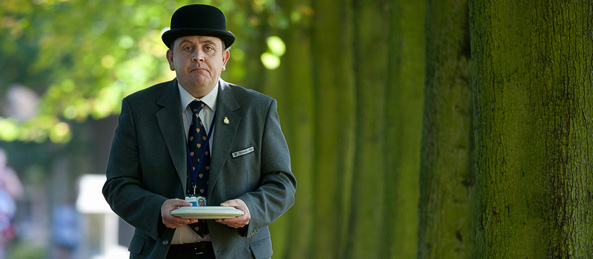
There are certain stock images of Cambridge that we all expect, and to which we can almost become blind, despite their unquestionable beauty. They are part of a rhetoric of the city that has held good for centuries, and like all effective rhetoric they are an enticement powered by our own desire. These are the expected images of Cambridge, the picture postcard ones; a photograph of a misty morning on the Cam, with a willow dappling into the water, a few punts moored, or a shot of the warm stone of King’s chapel against the brilliant blue of the fenland sky, or, of course, the colleges. This college, and this one, and this one – each more beautiful than the last, like the twelve dancing princesses, so that you catch your breath and wonder how anyone can actually live here, in this town that seems too beautiful to be true. Is there a Boots? Is there a Timpsons? Can you buy shampoo here, have your shoes repaired – are there any ordinary people? Were these beautiful timeless photographs taken ten years ago, twenty, two hundred?
Martin Bond’s photographs are anchored firmly in a time, in a town, and demonstrate that Cambridge is not only mellow stone and fruitful learning. The spontaneity with which the pictures are taken reflects a town that is full to bursting with all sorts of people, and that joyfulness and yearning and resignation and hope can be evident in any face. These images, over many days, might well remind us, while we are busy dreaming of some quiet other life that would provide happiness; the nine bean rows, the hive for the honey bee – that life is happening to us here, now, that we provide each other’s happiness, move each other to pity or laughter, and that, like Martin, we would benefit from paying more attention to each other.
The photographs are informed by an innate instinct for composition and colour; an extraordinary achievement when you see how Martin takes a picture. Ostensibly interested in the scintillating conversation of whomever he is talking to, his camera is suddenly up, the shutter is pressed, the photograph is taken, as quickly and astutely as a frog captures a fly. As important as the form is, though, what marks each of these photographs is generosity; each image is an honouring of life, of the very young, the very old, the very beautiful, the very desperate, the very funny, the very ordinary.
There is nothing didactic in the photographs; they have a relaxed tone, are often sympathetic, often celebratory, often funny, never malicious. They are as careful as they are spontaneous, as observant as they are generous – there is no general theme, no general point being made except that their very specificity and variety points to the universal business of being alive. All together, they show us that however beautiful Cambridge is, however ancient its gatehouses, however medieval its lanes, or still and green its courts, it is also a place where students and strangers, tourists and locals, vault and dance and play.
Deborah Meyler
1st January 2013
© 2010-2024 Martin Bond
All rights reserved. All images on this website are the exclusive property of Martin Bond and may not be reproduced, copied, transmitted or manipulated commercially without written permission.

